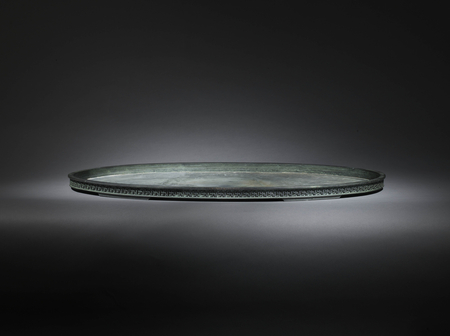Product Description
7409 A bronze suiban of oval form decorated with a manji (svastikah) key fret pattern
Japan 19th century Meiji period
Dimensions: H. 3cm x W. 62.5cm x D. 35.5cm (1¼” x 24¾” x 14”)
Suiban are trays used for bonseki, the practice of creating miniature landscapes from sand and rocks. These scholarly creations are usually displayed in the tokonoma, the formal display area within a traditional Japanese house.
卍 or 卐 is a symbol originating in India, svastikah in Sanskrit meaning “to be fortunate”. The word stem svasti can be divided into sv meaning good or well, and asti meaning is or being. In Japan it is used as a symbol of Buddhist faith and frequently appears on statues of Buddha. It is also one of the Sanjūnisō (32 Marks of the Buddha) and represents the possession of all virtues.







